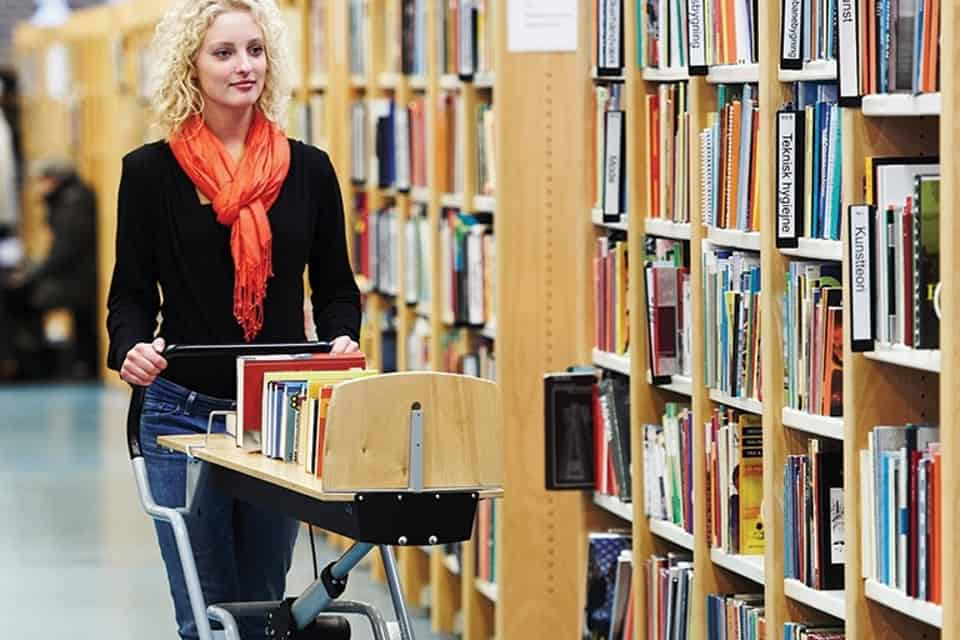Case Story: Aalborg Libraries
Aalborg Libraries Move From Barcode to Chip
“Sort Mate™ fulfilled management’s expectations for efficiency and staff expectations for user-friendliness.”
Finn Windfeldt, Development Coordinator, Aalborg Libraries

About the Library
The Aalborg Libraries is a large and busy library, managing the main library, 12 affiliate branches, and 3 bookmobiles. It is also one of Denmark’s six county libraries in charge of handling materials exchanged between all 98 municipalities in Denmark. The Aalborg Libraries have a long track record of embracing technology. aalborgbibliotekerne.dk
The Challenge
Logistics problems and 10-year-old barcode-based sorting system
Reaching the end of its service life, a 10-year-old barcode-based sorting system at Aalborg Libraries has been replaced by a state-of-the-art RFID chip-based sorting system.
In-house logistics were complicated by basement storage and sorting area and ground floor lending. Serving 12 satellite branches adds to the mix.
Aalborg Libraries consist of the central library in the city of Aalborg plus 12 branches. Always a forward-thinking library, automated sorting was installed in 2003 using a barcode-based system with the machinery and storage in the basement and lending area on the ground floor. Self-service machines were installed at some branches.
The Solution
Lyngsoe Library Mate™ self-service stations ensuring opening hours 24/7
Lyngsoe Systems overcame the logistics problem of the central library’s two floors by designing effectively two sorting systems linked by a specially-designed lift. Lyngsoe Systems’ Sort Mate™ system is modular, making installation in a restricted space with awkwardly-placed columns in the basement easy. 21 Lyngsoe Library Mate™ self-service stations were installed (height-adjustable for wheelchair users) ensuring opening hours 24/7 where needed and backed by a service agreement with Lyngsoe.
Improved material flow
- Once installed, the new system has been found to provide the following value for the library:
- Improved service for patrons
- Vastly improved ergonomics for staff
- Higher lending frequency
Benefits
Reduced overheads and streamlined logistics
- Streamlined logistics and materials flow
- Real-time data on where books and other materials are physically located
- Enhanced user-friendliness
- Reduced overheads
The Results
Increased efficiency and production levels
Eliminating the need to carry heavy boxes of materials around plus height-adjustable staff workstations has made a massive impact on staff ergonomics and employee satisfaction. Efficiency and production levels have increased, lending frequency has risen, waiting and turnover times have been slashed.